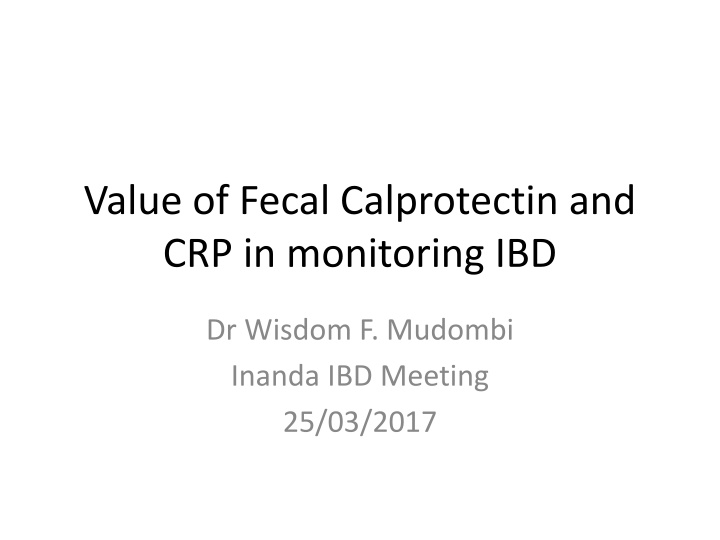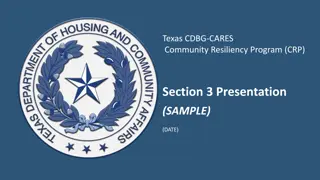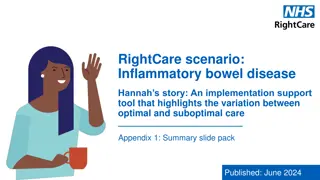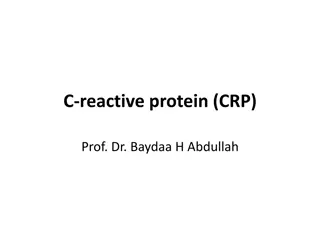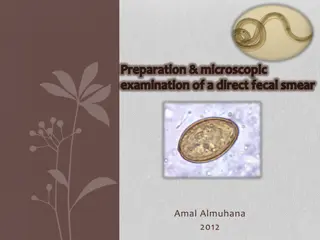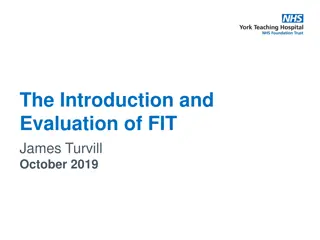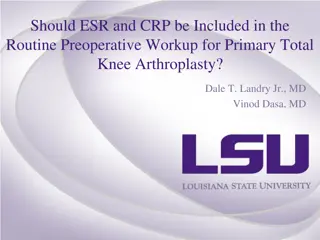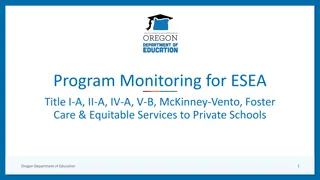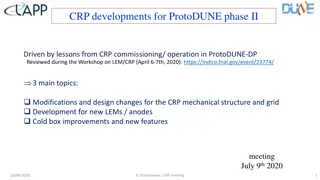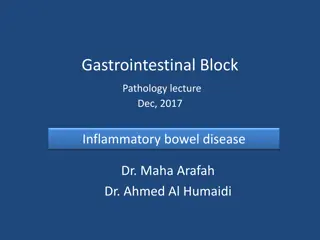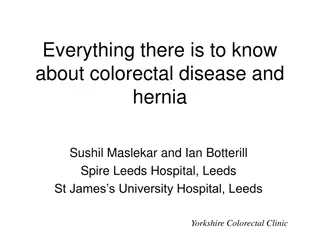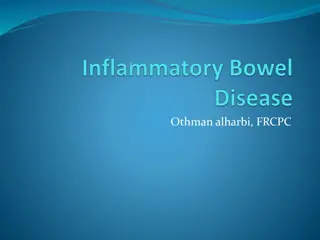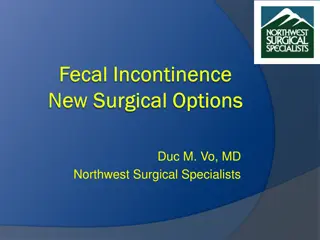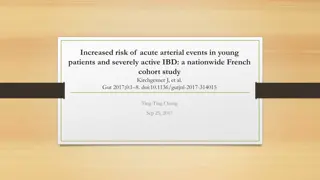Value of Fecal Calprotectin and CRP in Monitoring IBD
The presentation discusses the significance of fecal calprotectin and CRP in monitoring inflammatory bowel disease (IBD) for effective treatment outcomes, patient well-being, and disease management. It emphasizes the evolution of treatment goals towards achieving mucosal healing, patient expectations, and the importance of monitoring to determine the optimal intervention timing.
Download Presentation

Please find below an Image/Link to download the presentation.
The content on the website is provided AS IS for your information and personal use only. It may not be sold, licensed, or shared on other websites without obtaining consent from the author.If you encounter any issues during the download, it is possible that the publisher has removed the file from their server.
You are allowed to download the files provided on this website for personal or commercial use, subject to the condition that they are used lawfully. All files are the property of their respective owners.
The content on the website is provided AS IS for your information and personal use only. It may not be sold, licensed, or shared on other websites without obtaining consent from the author.
E N D
Presentation Transcript
Value of Fecal Calprotectin and CRP in monitoring IBD Dr Wisdom F. Mudombi Inanda IBD Meeting 25/03/2017
Disclosures Nil
Key Cornerstones Initial evaluation and risk stratification Setting the treatment goals Evidence-based use of available treatment options Objective re-evaluation: treatment target reached Optimizing treatment (biomarkers,TDM)
Evolution of treatment goals Clini Clinical Remission 1970s 1980s Biochemical Remission(CRP and fecal calprotectin) 1990s Endoscopic Remission 2000 Remission on cross- sectional imaging 2010 Histological Remission Currently PRO Remission Panaccione et al Infla Bowel Dis 2013
Why Mucosal healing? Lower relapse rate Fewer hospitalization Steroid sparing Mucosal Healing Better QoL Decreased need for surgery Mucosal lesions predict relapse after anti TNF withdrawal Lower postoperative recurrence Reduced CRC risk in UC Peyrin Biroulet L et al J Crohn s Colitis 2011 Rutgeerts P et al Gastroenterology 1990 Neurath M et al Gut 2012, Bougeun G et al Clin Gastroenterol Hepatology 2014
Patient expectations Symptom free Normal QoL Uninterrupted school/work Normal social/sex life No unsightly scars/stoma Gastroenterologist goals Deep remission Avoid hospitalization and surgery Prevent complications Minimize bowel damage No drug toxicity
Monitoring : Knowing When to Say When 27 yo male(A2), Brother CD, with significant weight loss, with pan-enteric (L3+L4),inflammatory( B1) Crohn s Disease CRP=21 Registrar CRP <1 in May 2013 Then 21 in July 2013 CRP=1 1 year to induce deep remission?
Monitoring and Window of Opportunity Cleynen I et al Lancet 2016;387:156-67
Monitoring avoids missed opportunity Missed opportunities: 1.Top down therapy 2.Start anti-TNF therapy instead steroids in July 2013 3.Act on high calprotectin in September 2013
Peyrin-Biroulet L et al American Journal of Gastroenterology,2015;110:1324-1338
STRIDE Consensus: Treatment goals in CD & UC Target is a combination of Clinical/PRO remission-resolution of abdominal pain & normalization of bowel habits Endoscopic remission resolution of findings of inflammation on cross-sectional imaging Peyrin-Biroulet L et al American Journal of Gastroenterology,2015;110:1324-1338
STRIDE Consensus: Treatment goals in CD Adjunctive measures of disease activity but are not a target include: CRP Fecal calprotectin Measures of disease activity that are not a target: Histology Cross-sectional imaging Peyrin-Biroulet L et al American Journal of Gastroenterology,2015;110:1324-1338
Disease monitoring Symptoms Active inflammation NB: stenosis , IBS, Bile acid diarrhea 20% of CD and UC patients have symptoms in absence of inflammation NO symptoms Absence of mucosal lesions NB: CDAI do not correlate well with endoscopic activity Normal mucosa No disease activity NB: transmural and extramural complication Peyrin-Biroulet L et al Gut 2014;63:88-95 Rutgeerts P et al N Eng J Med 2005
Objective re-evaluation Endoscopy/imaging Biomakers Colonoscopy/ileoscopy/Enter oscopy/CE CRP MR enterography/CT enterography Fecal calprotectin Transabdominal Doppler/contrast enhanced ultrasonography
Desirable attributes of IDEAL biomaker in IBD Non-invasive Convenient Rapid Reproducible Inexpensive Responsive Well defined threshold Differentiate organic from functional Grades severity of inflammation Predicts and measures response to therapy Monitors and predicts relapse Monitors for post- operative recurrence Sands B, Gastroenterology , 2015;149:1275-1285
Serum CRP in CD Acute phase protein produced by the liver (and mesenteric adipocytes in CD) in response to inflammation stimulated by cytokines such as IL- 6, TNF- and IL-1 Single nucleotide polymorphisms (SNPs) reported within various regions of the CRP gene (as well as regulating cytokine genes), which may affect baseline or stimulated CRP production 25% of patients with demonstrable activity of CD on endoscopy do not express CRP above the normal threshold. Peyrin-Biroulet L et al Gut 2012 Vermeire S et al Inflamm Bowel Dis 2004
Clinically active Crohn's disease in the presence of a low C-reactive protein Patients were prospectively recruited over 12 years in Brisbane IBD. Subjects in the low CRP group was < 10 mg/l. Active disease was defined as CDAI > 200. Florin TH et al Scand J Gastroenterol 2006; 41:306-11
Clinically active Crohn's disease in the presence of a low C-reactive protein Group 1(CRP < 10mg/L) Group 2 P values Number 22 201 Pure ileal disease 95% 53% 0.01 Lack of pure colonic disease 0% 24% 0.01 BMI(significantly lower) 20.3 25.0 0.006 Conclusions: Patients with CD and a persistently low CRP in the face of active disease were characterized by an almost pure ileal disease distribution and a low BMI, compared to those with a raised CRP. Despite the abnormally low BMI, fat wrapping was noted in the majority of low CRP patients undergoing ileal resection. Florin TH et al Scand J Gastroenterol 2006; 41:306-11
Baseline CRP predicts response to anti- TNF in CD-ACCENT 1 45% of patients with baseline CRP 7mg/L vs. 22% with CRP< 7mg/L maintained remission (p=0.012). Patients with an elevated baseline CRP level that did not normalize by week 14 were less likely to maintain remission through the remaining 40 week study period compared with patients whose CRP level had normalized at week 14 Reinisch W et al Aliment Pharmacol Ther 2012; 35: 568 576
Fecal calprotectin in CD 60% cytosolic protein mostly contained in neutrophil granulocytes High specificity and sensitivity (93-100%) Quantitative, non-invasive , stable Marker of biochemical and mucosal activity in CD D Haens et al Inflamm Bowel Dis 2012
Disease activity and biomakers in CD Jones J et al Clin Gastroenterol Hepatol 2008;6:1218-1224
Evidence from the STORI ? STORI(infliximab diSconTinuation in CrOhn s disease patients in stable Remission on combined therapy with immunosuppressors) Factors independently associated with time to relapse: hsCRP level 5 mg/L Fecal calprotectin 300 g/g Leukocyte count 6x109/L & Hb 145 g/L Male sex No previous surgical resection
Calprotectin predicts relapse in CD Louis E et al Gastroenterology 2012;142:63-70
The STORI with CRP and fecal calprotectin CRP 5mg/L can predict mucosal healing with a sensitivity of (70%), low specificity of (40%). Fecal calprotectin 250mg/g more effective than CRP at predicting mucosal healing sensitivity (80%), specificity(50%). The combination of these 2 markers may further improve accuracy Louis E et al Gastroenterology 2012;142:63-70
How about Monitoring in postoperative CD Half of CD patients require surgery with 10 years after diagnosis Endoscopic recurrence within 1 year after surgery is 35%-85% Endoscopic recurrence preceeds clinical recurrence with approx. 1 year ECCO recommends endoscopic monitoring 6- 12 months after surgery Solberg IC et al Clin Gastro Hepatol 2007 Rutgeerts P et al Gastroenterology 1990 Annese V et al J Crohn s Colitis 2013
POCER the trial? No endoscopy Best drug therapy All patients Metronidazole 0-3 months 18 month colonoscopy Low risk : no further treatment Randomisation Primary endpoint endoscopic recurrence High risk : thiopurine Risk stratification Low or high High risk and thiopurine intolerant : adalimumab 6 month colonoscopy Step-up treatment if recurrence Surgery Endoscopic intervention Curative resection De Cruz et al Lancet 2014 0-18 months
POCER trial sub-analysis Endoscopic remission vs recurrence at 6 & 18 months Matched endoscopy and FCP <300 g/g Wright EK et al Gastroenterology 2015;148:938-947
Calprotectin and disease progression NB: Measuring the calprotectin helps decide on magnitude of inflammatory burden given the disconnect with symptoms *****FC monitoring gives enough to help you decide the next step in therapy Kennedy NA et al ECCO 2012 Poster P250
Tight monitoring Mild disease Severe disease Moderate disease +risk factors -risk factors Anti- TNF+ AZA EEN or CS +AZA Anti- TNF+ AZA Corticosteroids /Budesonide
Biomakers in UC CRP Reduction in CRP corresponds with response to treatment CRP (and albumin) is predictive of colectomy Correlation of CRP levels with mucosal healing is modest ASUC on day 3, CRP > 45mg/L to decide for IFX/CSP Fecal calprotectin Correlates with response to induction therapy Is predictive of LOR to maintenance treatment Correlates well with mucosal healing Henriksen M et al Gut 2008 Cacheux W et al Am J Gastroenterology 2008
Take Home Messages Biomakers reflect residual intestinal inflammation. Biomakers facilitate the monitoring of a patient rather than being a target for treatment per se. Failure of CRP & FC normalization should prompt further endoscopic evaluation, irrespective of symptoms.
Take Home Messages Be aware of potential missed opportunities Remember 25% in CD do not express CRP above the normal threshold. There is value to monitor using both CRP and FCP Close monitoring ...and act on the results of monitoring
